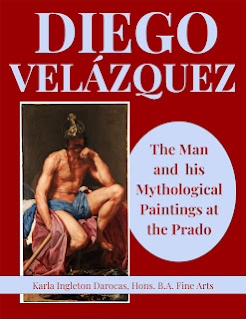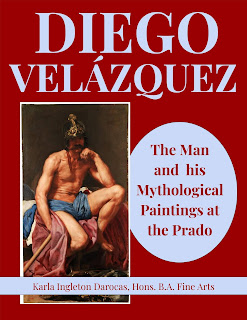"A fascinating description of Diego Velázquez and his mythological paintings is an excellent read.
Karla Darocas has done it again. She knows how to keep her audience interested by presenting us with new themes and insights. In this case, you might think that the painter Diego Velázquez (1599-1660), who is so well known, and his world-famous painting Las Meninas (1656), which has been described so many times, that this is all we need to know about him. However, this new book by Karla sheds light on a subject that has not really been explored by others.
The book shows us Velázquez as a cultured man who was interested in disciplines such as ancient philosophy, astronomy, anatomy and sculpture. We find the result of his studies in beautiful and well-described paintings such as 'Mars' and 'Vulcan's Forge'.
Karla explains where and how Velázquez found inspiration, whether in his early days in Seville or during his first years in Madrid, during his travels to Italy and in his later years in Madrid.
A detailed (cultural) historical context at the time, such as events and descriptions of the court and government/economy of King Felipe IV make the book a must for art historians. The mention of a variety of mythical figures such as Mercury and Argus or the Slave, Aesop and others gives an insight into the wealth of knowledge Velázquez gathered during his life.
With this book in hand, the reader will experience a new world of 17th century art in Spain, Italy and Europe as it was known at the time.
I highly recommend the well-written chapters, which are illustrated with beautiful colour photographs of dozens of Velázquez's paintings as well as works of art that certainly inspired the man.
Karla's often witty personal comments will appeal to students of art history and encourage them to form their own opinions."
- Trudi van Dorp, Cumbre del Sol, Spain





